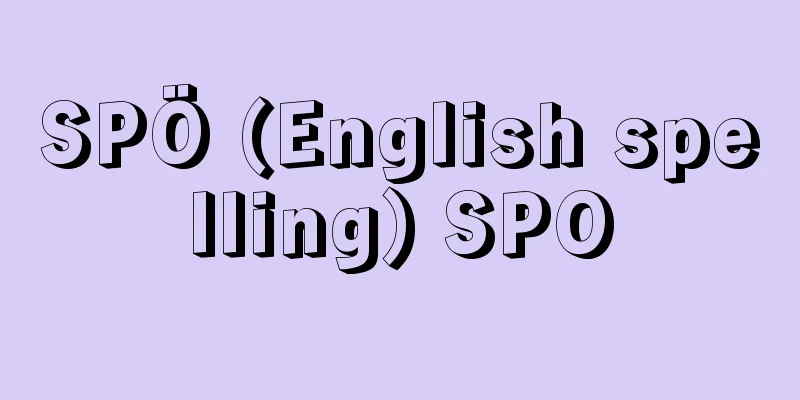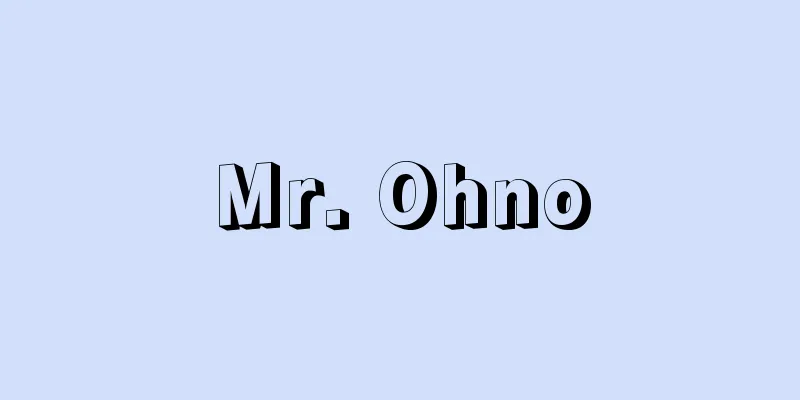Japanese language education - kokugokyoiku

|
It is a general term for educational activities related to the mother tongue or official language provided to members of a nation or ethnic group. The term national language education is generally used to encompass discipline, guidance, and training related to national language life and national language ability (including knowledge, skills, and attitudes) that are carried out in the home, society (the workplace, etc.), and school. In Japan, national language education is the education of Japanese as the mother tongue. However, under a certain school education system, when a single subject called Japanese language is organized in elementary, junior high, and high schools, and educational content appropriate to each school type is organized and learning instruction is provided to children and students intentionally and systematically, it is called Japanese language education. Although a distinction is often made between Japanese language education (broad sense) and Japanese language education (narrow sense) and the two are used interchangeably, it is not uncommon for Japanese language education to refer to Japanese language education in general. Of course, Japanese language instruction and education are also provided in kindergartens and daycare centers, universities (especially liberal arts courses and even specialized courses), and various vocational schools. "Japanese language education" provided in (kindergartens), elementary, junior high, and high schools, (universities), etc., is the core of Japanese language education (broad sense), and Japanese language education at home forms the foundation and foundation of Japanese language education, while Japanese language education in society (workplaces, workplaces, etc.) is seen as the application, development, and refinement of Japanese language education. [Noji Junya] Japanese Language as a Basic SubjectIn school education, Japanese language is considered a basic subject. The reasons why it is considered a basic subject among many other subjects are as follows. (1) Learning a national language is central to human development. It deepens thinking ability, enriches emotions, and enables communication between people. By learning one's native language, one is able to live a social life as a member of a nation. (2) It is the core of acquiring basic academic skills. The acquisition and development of comprehension and expression skills makes it possible to study many other subjects and promotes many learning activities. (3) It enables the formation and creation of literature, science, and culture. The national language (language) plays a major role not only in the creation of what is called language culture, but also in other scientific fields. From this perspective, Japanese language education is a subject that aims to help learners (children and students) acquire life skills, learning abilities, and creativity through instruction in the Japanese language (language). [Noji Junya] Objectives and goalsThe goal of Japanese language education is to have members of a nation and a nation acquire the language skills necessary for social life and social activities. In particular, the purpose and goal of Japanese language education is to foster and improve the Japanese language skills (expression and understanding) necessary for daily life through elementary, junior high, and high schools, and to have them respect the Japanese language. In other words, the goals are to "foster the ability to express and understand the Japanese language appropriately and to improve the ability to communicate" (elementary school, junior high school, and high school), to "foster thinking ability and imagination" (elementary school and junior high school), to "develop thinking ability and enrich emotions" (high school), to "foster" (elementary school), "enrich" (junior high school), and "polish" (high school) a sense of language, and in addition to these, to "deepen interest in the Japanese language and foster an attitude of respect for the Japanese language" (elementary school), to "deepen awareness of the Japanese language and foster an attitude of respect for the Japanese language" (junior high school), and to "deepen interest in language culture and foster an attitude of respecting the Japanese language and improving it" (high school) (according to the "Course of Study" for elementary, junior high, and high schools). [Noji Junya] regionThe areas of Japanese language education (Japanese language education) can be considered as language elements, language ability, and language culture. "Language elements" include characters, pronunciation, grammar, phrases, vocabulary, and writing, and are the core area of Japanese language education (Japanese language education). "Language ability" includes the ability to understand and express in language life and language acts, and is the core area. "Language culture" includes classics (classical Japanese and classical Chinese) as well as excellent modern and contemporary works and compositions, and has established an area that demonstrates the traditions and uniqueness of ethnic culture. The subject of Japanese language education (Japanese language education) through these various areas can be summarized into three categories: words (characters, phrases, grammar), sentences, and writing (paragraphs and works). The structure of Japanese language education (Japanese language education) classes is based on goals, content, methods, and evaluation, and practice is undertaken while building a learning instruction process for each unit and teaching material. Japanese language education (Japanese language education) forms the core of national education. [Noji Junya] Historical developmentsFrom the perspective of the establishment of the Japanese language subject, it can be divided into the following three periods. (1) First Period: From before the establishment of the Japanese Language Course to the establishment of the Japanese Language Course -- from the first year of the Meiji Period to 1899 (Meiji 32) Through the late Meiji and Taisho periods and into the Showa period (before World War II), Japanese language education enriched its content, both as literary and linguistic education, and reached its peak around 1935 (Showa 10). However, in April 1966, before the outbreak of the Pacific War, elementary schools were converted into national schools. The previous Japanese language subject, along with ethics, history, and geography, was integrated into the national subject, which came to be called the National Subject of Japanese. As the Pacific War intensified, the implementation of this subject did not go as expected, and the defeat once again forced a fundamental reform. In 1947 (Showa 22), the Fundamental Law of Education and the School Education Law were promulgated, followed by the Enforcement Regulations for the School Education Law. The Japanese language subject was also organized institutionally based on the Course of Study. The Course of Study, which was first enacted in 1947, was subsequently revised in 1951, 1958, 1968, 1977, 1990, and 1998 (1999 for high schools). In the seventh revision (1998, for high schools), the content area structure of the Japanese language subject was revised, and it was newly composed of three areas and one item: "A Speaking/Listening," "B Writing," "C Reading," and "Language Matters." With the close relationship between each area, emphasis was placed on nurturing the ability to express and understand in a harmonious manner, and efforts were made to put this into practice. [Noji Junya] assignmentThe Japanese language ability (especially reading and writing ability) of the people of Japan today is recognized as being at a fairly high level, even by international standards. However, there are still many areas in which the Japanese language education currently being provided in elementary, junior high, and high schools is insufficient in terms of whether it is truly helping each and every child or student acquire Japanese language ability (language ability). When children and students are indifferent to their own and others' languages, are passive and apathetic in improving their own language skills (language ability), it is not easy to improve their language skills (expression and understanding), instill love for the Japanese language, and cultivate an attitude of respecting the Japanese language. However, Japanese language education must strive to achieve this goal. In an information society that is centered on images, Japanese language education is desired to develop students' ability to think independently and independently through language, and to enrich their creativity. Japanese language education that enriches and cultivates humanity will become increasingly important. The focus is not on raising children and students who are skilled in the simple skills of speaking, listening, writing, and reading. The eternal challenge of Japanese language education is to raise children and students who are thoughtful, human, and possess a human language, and who will protect their mother tongue (Japanese) throughout their lives. [Noji Junya] "The Fundamentals of Japanese Language Education" by Noji Junya (1973, Kyobunsha)" ▽ "The Revised Edition of the Complete Works of Education, Volume 5, Language and Thought, edited by Hatano Kanji et al. (1975, Shogakukan)" ▽ "The Creation of Japanese Language Education" by Noji Junya (1982, Kokudosha)" ▽ "The History of Modern Japanese Language Education" by Ishii Shoji (1983, Education Publishing Center)" ▽ "The Ideas and Practices of the Japanese Language Department" by Kurazawa Eikichi (1999, Toyokan Publishing)" [Reference items] | | | |Source: Shogakukan Encyclopedia Nipponica About Encyclopedia Nipponica Information | Legend |
|
国家・民族の成員に対して施される母国語あるいは公用語に関する教育営為を総称していう。国語教育という語は、一般に家庭、社会(職域・職場など)、学校において営まれる、国語生活・国語能力(知識・技能・態度をも含む)に関するしつけ・指導・訓練などを包括して用いられる。わが国の場合、国語教育は母国語としての日本語の教育である。 しかし、一定の学校教育制度下にあって、小学校・中学校・高等学校などで、国語科という1個の教科を編成し、それぞれの校種にふさわしい教育内容を組織して、児童・生徒に対し意図的・計画的に学習指導が行われる場合には、国語科教育と称される。国語教育(広義)と国語科教育(狭義)を区別して、両者が使い分けられることも多いが、一般には国語科教育をさして国語教育と称することも少なくない。もちろん、幼稚園・保育所においても、大学(とりわけ教養課程、さらには専門課程)や各種専修学校等においても、国語の指導・教育は行われている。(幼稚園)・小・中・高等学校・(大学)等で営まれる「国語科教育」は、国語教育(広義)の中核をなすものであり、家庭における国語教育は、国語科教育の土台・基盤を形づくり、社会(職域・職場など)における国語教育は、国語科教育の応用・発展・精練であるともみられる。 [野地潤家] 基礎教科としての国語科学校教育における国語科は基礎教科として重きをなしている。多くの教科群のなかで基礎教科と目される根拠は、以下のとおりである。 (1)国語(言語)の習得は人間形成の中核をなしている。思考力が深まり、心情が豊かになり、人間同士の通じあい(コミュニケーション)が成り立つ。母国語を習得することによって、民族としての、国家の成員としての社会生活が営まれるようになる。 (2)基礎学力獲得の中枢をなしている。理解力・表現力の習得と伸長とによって、他の数多くの教科の学習を可能にし、多くの学習活動を助長していく。 (3)文学、科学、文化の形成と創造とを可能にしていく。言語文化とよばれているものの創造はもとより、他の諸科学領域においても、国語(言語)の果たす役割は大きい。 このようにみれば、国語科教育は、学習者(児童・生徒)に国語(言語)の学習指導を通じて、生活力、学習力、創造力を身につけさせるための教科としての教育である。 [野地潤家] 目的・目標国語教育の目標は、国家・民族の成員に社会生活・社会的活動をなすに必要な言語能力を習得させていくことに置かれている。わけても、国語科教育の目的・目標は、小学校・中学校・高等学校を通じて、生活に必要な国語の能力(表現力・理解力)を養い、高め、国語を尊重していくようにさせることに求められる。つまり「国語を適切に表現し正確に理解する能力を育成し、伝え合う力を高めるとともに」(小学校・中学校・高等学校)、さらに「思考力や想像力を養い」(小学校・中学校)、「思考力を伸ばし心情を豊かにし」(高等学校)、言語感覚を「養い」(小学校)、「豊かにし」(中学校)、「磨き」(高等学校)、これらに加えて「国語に対する関心を深め国語を尊重する態度を育てる」(小学校)、「国語に対する認識を深め国語を尊重する態度を育てる」(中学校)、「言語文化に対する関心を深め、国語を尊重してその向上を図る態度を育てる」(高等学校)という目標がたてられている(小・中・高等学校「学習指導要領」による)。 [野地潤家] 領域国語教育(国語科教育)の領域としては、言語要素、言語能力、言語文化が考えられる。「言語要素」は、文字、発音、文法、語句、語彙(ごい)、表記などを含み、国語教育(国語科教育)の基軸をなす領域である。「言語能力」は、言語生活・言語行為における理解力・表現力を含み、中核をなす領域である。「言語文化」は、古典(古文・漢文)をはじめ、近代・現代における優れた作品・述作を含み、民族文化の伝統と独自性を示す領域を築いている。 これら各領域を通じての国語教育(国語科教育)の対象としては、ことば(文字・語句・語法)、文(センテンス)、文章(段落・作品)の三つの種類にまとめられる。また、国語教育(国語科教育)の授業の構造は、目標、内容、方法、評価によって機能し、単元ごと、教材ごとに学習指導過程を構築しつつ、実践が営まれる。国語教育(国語科教育)は国民教育の中核をなしている。 [野地潤家] 歴史的展開国語科の成立を視点として、次の3期に分けられる。 (1)第1期 国語科以前から国語科の成立まで――明治初年から1899年(明治32)まで 明治後期、大正期を経て、昭和(第二次世界大戦前)期に入ると、国語科教育は、文学教育としても言語教育としても、その内容を充実させ、1935年(昭和10)ごろには、もっとも高揚した時期を迎えた。しかし、41年4月、戦時下、太平洋戦争勃発(ぼっぱつ)を前に、小学校は国民学校へと切り替えられた。従来の国語科は修身・歴史・地理とともに、国民科に統合され、国民科国語とよばれるようになった。太平洋戦争の激化とともに、その実践は思うに任せず、敗戦によって、ふたたび抜本的改革を迫られるに至った。 1947年(昭和22)「教育基本法」「学校教育法」が公布され、さらに「学校教育法施行規則」が制定された。国語科も制度的には「学習指導要領」に基づいて組織された。47年初めて成った「学習指導要領」は、その後、51年、58年、68年、77年、90年、98年(高等学校は99年)と改訂がなされた。第7次の改訂(98年。高等学校は99年)では、国語科は、内容の領域構成を改め、新たに「A話すこと・聞くこと」「B書くこと」「C読むこと」および「言語事項」の3領域1事項から構成することとし、各領域の密接な関連のなかで、表現と理解の能力を調和的に育てていくことを重視し、実践に取り組むことになった。 [野地潤家] 課題今日わが国における国民の国語学力(とくに読み書き能力)は、国際的にみても、かなり高い水準にあると認められる。しかし、現下の小学校・中学校・高等学校において営まれている国語科教育が、児童・生徒のひとりひとりに国語学力(言語能力)を本当に身につけさせているかといえば、まだ十分でない点が多く残されている。 児童・生徒が自他のことばに無関心で、自らの国語学力(言語能力)を高めていくことに消極的であって、無気力に陥っている場合、国語学力(表現力・理解力)を伸ばし、国語愛を植え付け、国語を尊重していく態度を育てていくのは、容易なことではない。しかし、国語科教育としては、そのことを努力目標として進まなければならない。映像中心になった情報化社会にあって、主体的に自主的に言語を通して自ら思考力を伸ばし、創造性を豊かにしていく国語科教育が望まれている。人間性を豊かに育てていく国語科教育は、ますます重要性を増してくるであろう。話すこと、聞くこと、書くこと、読むことの単なる技能(スキル)に巧みな児童・生徒を育てるところに主眼はない。思慮深く、血の通った、人間的なことばの所有者として、生涯を通じて自らの母国語(日本語)を愛護していく児童・生徒の育成こそ国語教育(国語科教育)の永遠の課題である。 [野地潤家] 『野地潤家著『国語教育原論』(1973・共文社)』▽『波多野完治他編『増補版教育学全集5 言語と思考』(1975・小学館)』▽『野地潤家著『国語教育の創造』(1982・国土社)』▽『石井庄司著『近代国語教育論史』(1983・教育出版センター)』▽『倉澤栄吉著『国語学室の思想と実践』(1999・東洋館出版社)』 [参照項目] | | | |出典 小学館 日本大百科全書(ニッポニカ)日本大百科全書(ニッポニカ)について 情報 | 凡例 |
<<: Japanese language and Japanese character questions - kokugokokujimondai
>>: Japanese linguistics - kokugogaku
Recommend
Allamanda
The most well-known of these is A. cathartica L. (...
IAS - Institute of Advanced Studies
International Accounting Standards: International ...
Three B Policy - Sanbi Seisaku
A term that symbolizes Germany's imperialist ...
Burin
…In addition, various engraving techniques are co...
Enagarasu - Enagarasu
…He first studied in Vienna, then organic chemist...
Korean flute / Koma flute - Komabue
A type of bamboo flute. In the past, it was also w...
Tender bill
…From 1953 to 1961, the so-called bills only poli...
Mina Yamauchi - Mina Yamauchi
1900-1990 A social activist from the Taisho to Sh...
Kanda Nobu - Kanda Nobu
English scholar and English educator. Born the so...
To the Lighthouse - Toudaihe (English spelling)
A full-length novel by the British female author ...
Cochin (English spelling)
A port city in the central state of Kerala, southw...
Huntington, G.
...Penicillin may also be given to treat rheumati...
Dolomieu, G.de (English spelling) DolomieuGde
...Dolomite is a type of limestone that has been ...
Gashira - Gashira
→ Rockfish Source: Shogakukan Encyclopedia Nippon...
Class value - Kaikyuchi
The median value of each class when the distributi...









